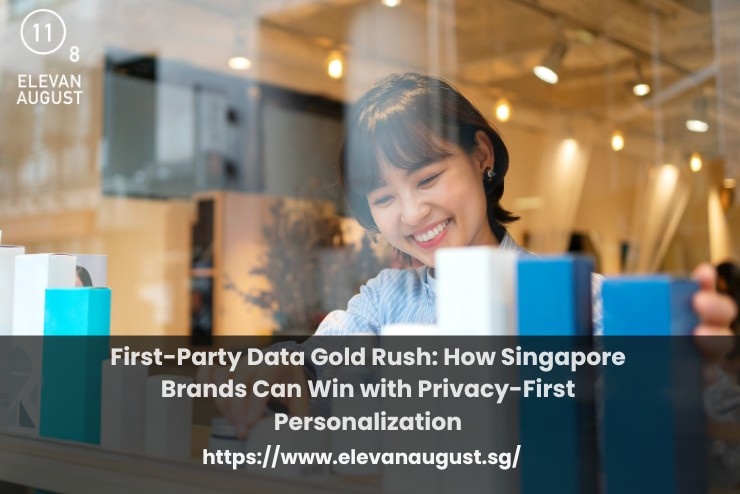Data collection rules are shifting. Tracking is harder. Retargeting costs more. If you’re still relying on cookies or shared datasets, your strategy may be running on fumes.
Most brands are feeling this shift. But some are turning it into an edge. They’re choosing to own their audience insights, not borrow them.
First-party data gives you that control—and done right, it leads to stronger trust, sharper targeting, and a better experience for everyone.
Let’s understand how to build with it.
1. Understand What First-Party Data Really Means
First-party data is what your audience shares directly. Think purchase history, on-site behaviour, form responses, email clicks. It’s clean, direct, and fully within your control.
That makes it more reliable than third-party lists or marketplace guesses. It also means you have full visibility into how and why someone engages.
Brands leading privacy-first marketing in Singapore often start with reviewing what they already collect and spotting gaps in that foundation.
The quality of your data depends on the questions you ask and where you store the answers.
2. Trade Value for Consent, Not Just Clicks
People will share data when they see a reason to. So the key isn’t asking for permission; it’s giving one. That might be early access, smarter suggestions, or simpler service.
Set expectations clearly. What you collect, why it’s helpful, and how it’s used. That clarity matters more now, as users grow more aware of their digital footprint.
This is where customer experience marketing shows its weight. Asking for less but delivering more tends to outperform the opposite.
3. Tie Data to Better Experiences
Gathering data means little if it doesn’t make the user’s experience smoother.
Do returning customers see fewer prompts? Are emails tailored based on behaviour? Does the product page remember what they checked last time?
Even simple nudges like remembering size filters or offering content based on location can build stronger engagement.
This is how data-driven personalization in Singapore is growing; not as a gimmick, but as a quiet layer that makes digital touchpoints feel more human.
4. Build Systems That Grow with You
Many brands collect data without knowing how to use it. Others try to personalise too early, without enough context. Both lead to friction.
Start with structure. What tools store your data? What tags and labels matter? Who owns each part of the workflow?
Teams that treat data like a product (not just a resource) tend to create more useful experiences. And they catch inefficiencies before they compound.
5. Plan Around Privacy from the Start
Privacy-first marketing in Singapore means more than showing a cookie banner. It’s about respecting the signals your users send and building around them.
This could mean designing opt-ins at key moments, limiting how long data is stored, or making unsubscribe flows easier.
It also means giving users access to their own data and letting them update preferences. Transparency turns into retention when it’s handled proactively.
6. Audit Regularly to Keep Signals Clean
Good data can go stale fast. Interests change. Devices switch. Even how people type their names can vary across forms.
Run monthly checks on your CRM. Validate key fields. Merge duplicates. Remove inactive lists. These steps aren’t glamorous, but they keep the machine running clean.
A small team managing customer experience marketing can often get more out of a lean, well-maintained dataset than a bloated one full of noise.
Final Thoughts
Strong personalization depends on strong foundations—and those come from clarity, not complexity. When your audience understands why you collect data and sees the value it creates, they lean in rather than opting out.
At Elevan August, we build systems that turn first-party signals into actionable strategies. Our team helps clients connect the dots between insight and interaction, without overstepping customer expectations.
If your current setup collects data but struggles to put it to work, it may be time to reframe how personalization fits into your broader marketing flow—with Elevan August guiding the way.






